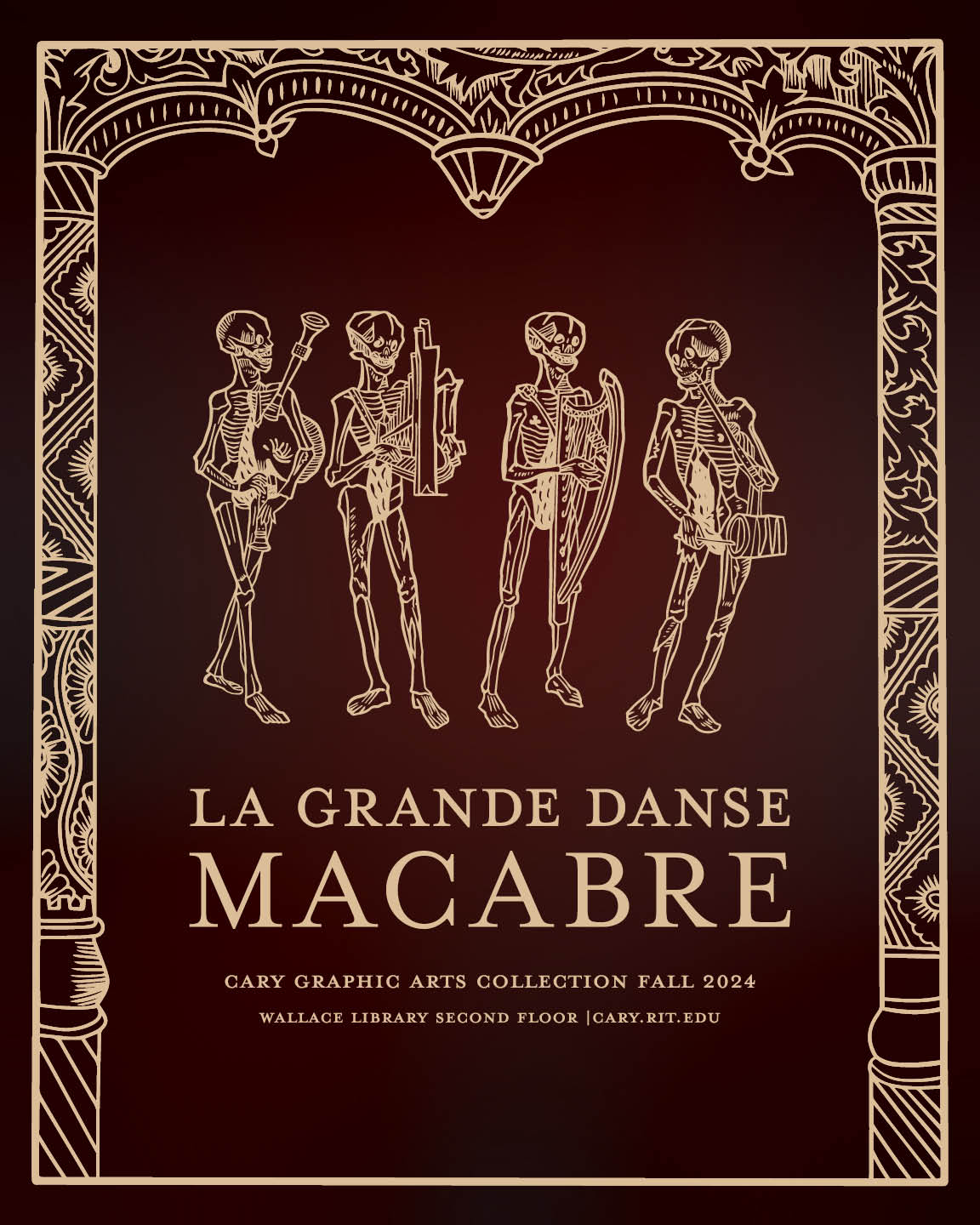La Grande Danse Macabre

La Grande danse macabre (The Great Dance of Death). Troyes: Jean-Antoine Garnier, c. 1766–1773.
In 14th-century European churchyards, grim figures with skeletons painted over dark clothing startled audiences as they whisked away men and women from all stations in life. Whether a royal, a pope, a pauper, or a child, no one was spared from death’s grasp. Similar theatrical scenes soon appeared painted on church murals, and later drawn in manuscripts and illustrated in print books.
In 1485, French printer Guy Marchand published La Danse Macabre with woodcut images depicting skeletons leading men and women from all walks of life to their doom. The illustrations were based on a mural in the charnier at Cimetière des Innocents in Paris. Dialogues between the skeletons and their victims accompany the woodcuts, giving voice to the ghastly encounters. Marchand’s La Danse Macabre was so popular that fourteen editions appeared before the century’s end. His printed memento mori appeared in various versions for centuries to come. The copy on display recently acquired by the Cary Collection was printed by Jean-Antoine Garnier in Troyes, France, sometime between 1766 and 1773.
Steve Galbraith, curator
Zahra Babaei, photographer
Katie Updegrove, designer



